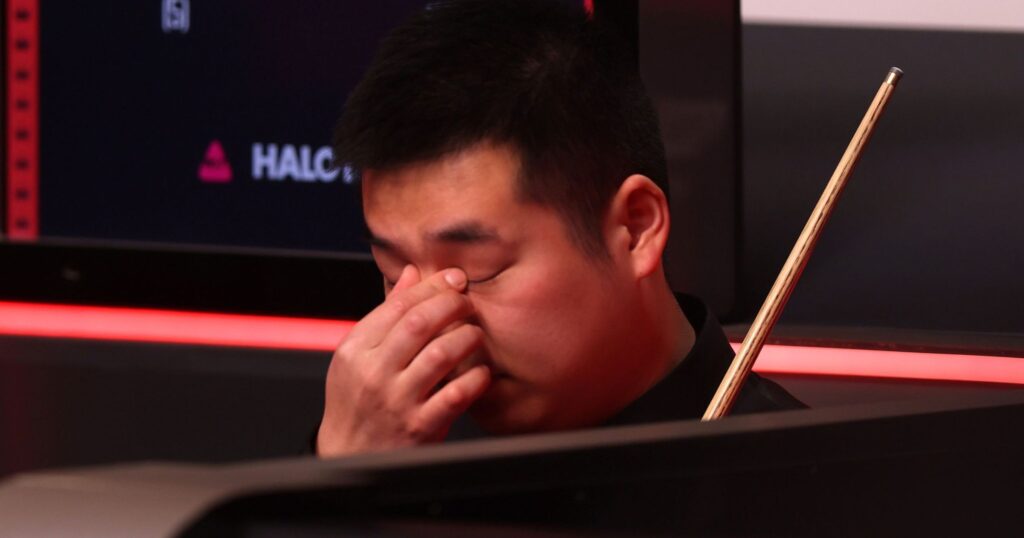Pang Junxu found himself in a rather daunting situation even before he made his way into the iconic Crucible Theatre, a venue renowned for its rich history in the world of snooker. His second-round opponent was none other than Ronnie O’Sullivan, a name synonymous with excellence in the sport. O’Sullivan, with his quicksilver ability and remarkable skill set, posed a formidable challenge, and Pang knew that any elementary mistakes would considerably impair his chances of success.
During his third appearance at the prestigious event that is the World Snooker Championship, Pang quickly found himself in deep waters when O’Sullivan swept through the opening four frames of their contest with remarkable ease. This unanticipated early deficit placed tremendous pressure on the Chinese player, who sought to stabilize the ship following O’Sullivan’s strong start. He managed to gather himself and claimed the fifth frame, a brief glimmer of hope amidst the storm that was escalating around him.
However, the complexities of the game were far from over, as Pang encountered yet another hurdle in the seventh frame. After potting a red ball, he aimed to gain position on the black, a high-value shot that could potentially shift the momentum in his favor. Unfortunately, in an alarming twist of fate, Pang ended up getting a tad too close to the black ball, resulting in the cue ball resting precariously against it. Recognizing the tactical predicament, referee Jan Verhaas promptly intervened, assessing the situation as “touching ball.”
Verhaas, with his astute understanding of the game, clarified to Pang that since the cue ball and the black ball were in contact, he needed to declare his intended color. This rule differed significantly from instances where the cue ball is touching a red, in which case the player’s intention is obviously directed at targeting that red. In Pang’s situation, he had several options to consider: he could nominate the yellow, green, brown, blue, or pink balls, each ostensibly presenting its own set of challenges, or he could declare his intention to play the black and aim away from it.
Pang took his time to assess the situation meticulously, all the while Verhaas remained observant, gauging the impending decision and the ensuing play. After a moment of deliberation, Pang finally decided to make his move, striking the cue ball away from the black in the direction of the green. However, at that moment of pivotal action, Verhaas ruled it a “foul.” This sudden declaration drew a startled glance from Pang towards his left, where the referee stood, maintaining his authority in the matter.
With a composed demeanor, Verhaas reiterated, “You did not declare your colour, and I asked you to declare. You have to declare,” leaving no room for ambiguity regarding the rules and expectations in such high-stakes moments. To Pang’s credit, he accepted the ruling without quarrel. His reaction illustrated his respect for the game and its regulations, despite the oversight. This acceptance of responsibility and adherence to fairness is a testament to his character and sportsmanship.
Regaining his composure, Pang returned to the table shortly after and made a remarkable effort to secure the frame, demonstrating resilience in the face of adversity. This particular incident not only highlighted the complexities of snooker but also underscored the importance of mental acuity and adherence to the rules. Every moment in the Crucible can significantly shift the game’s dynamics, and Pang’s ability to recover from such a potential setback speaks volumes about his potential and determination in the world of snooker.











